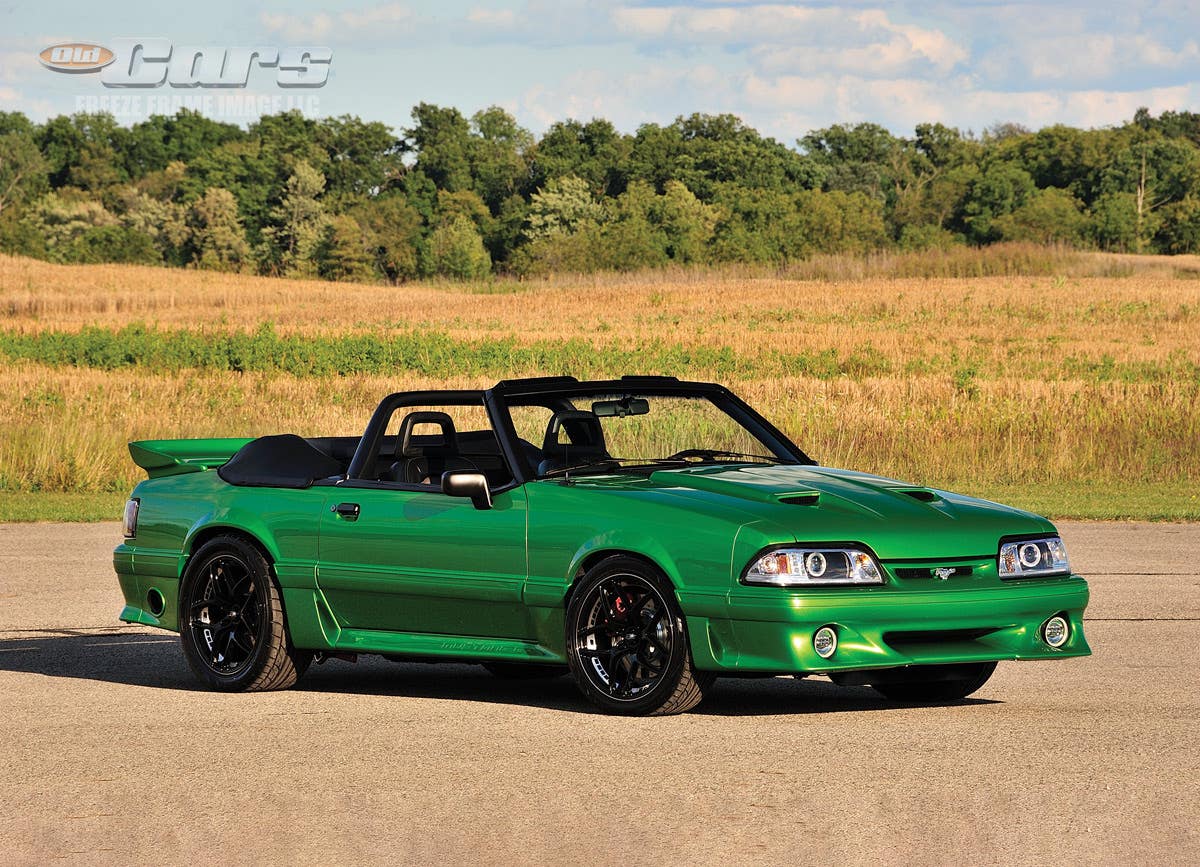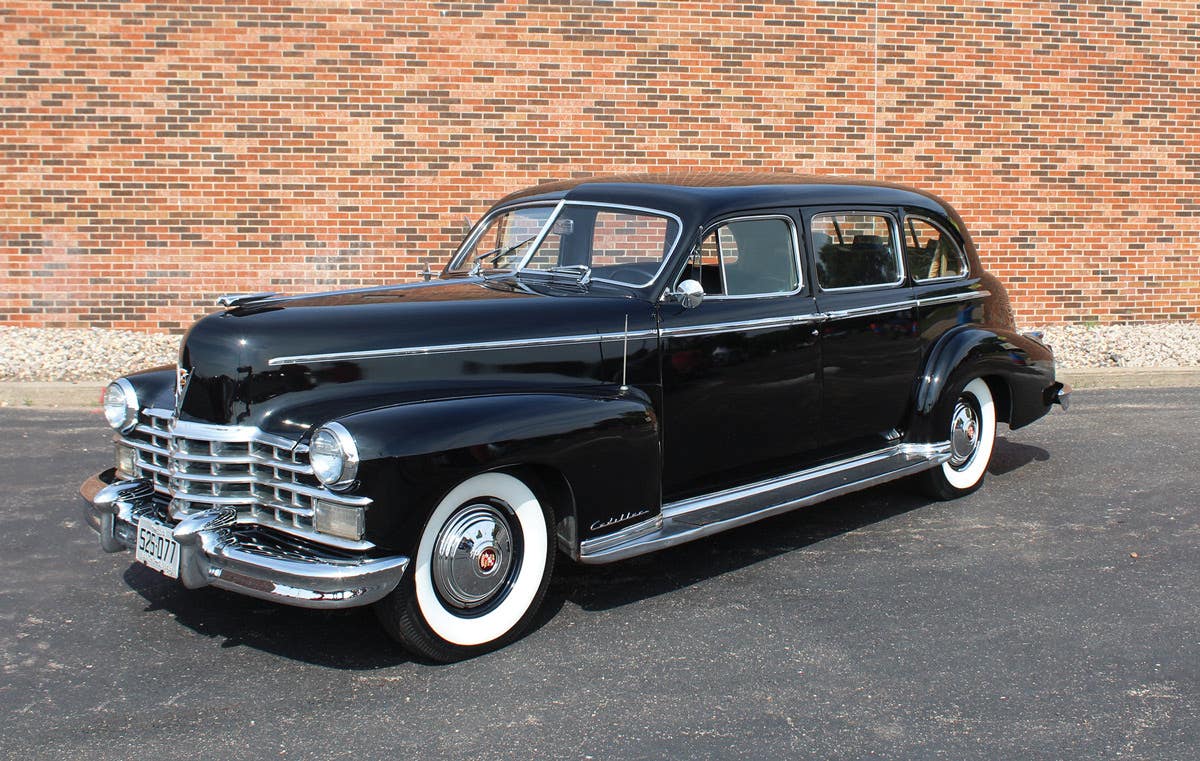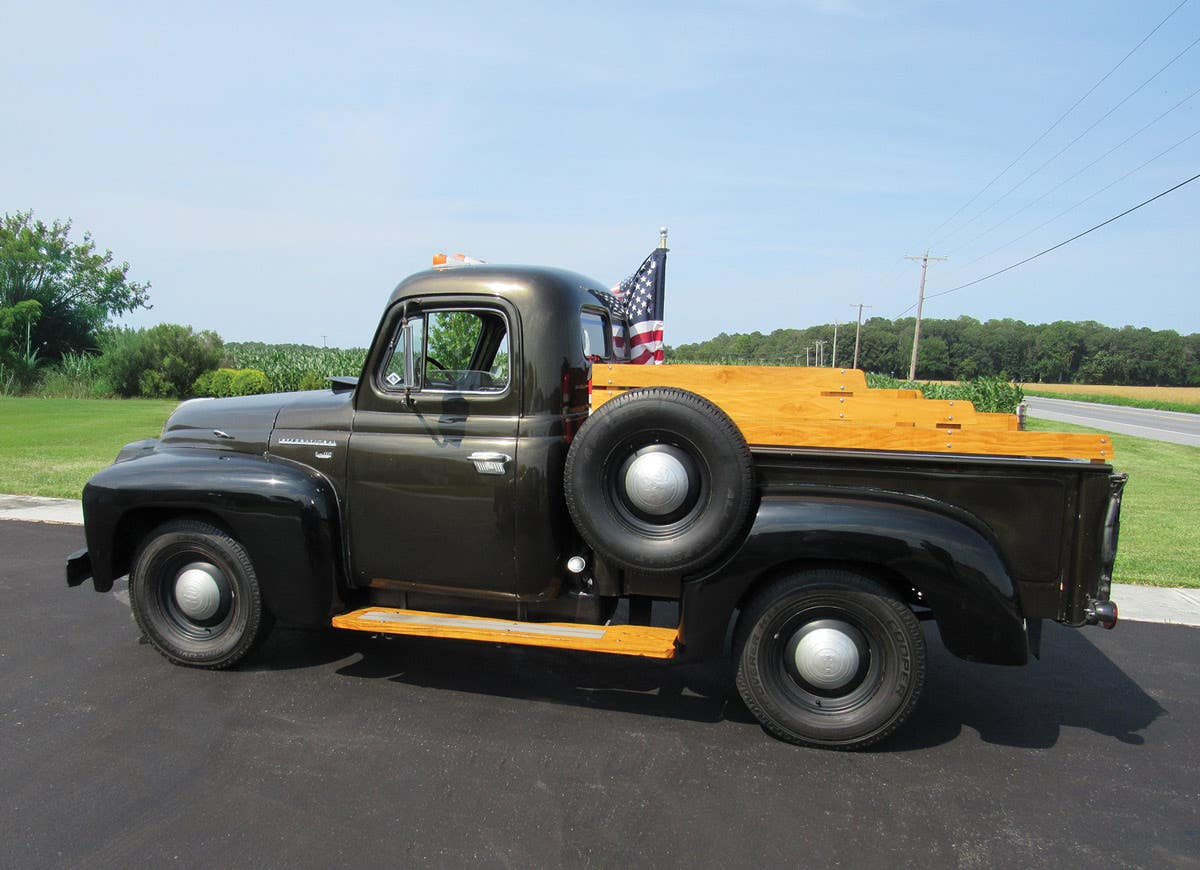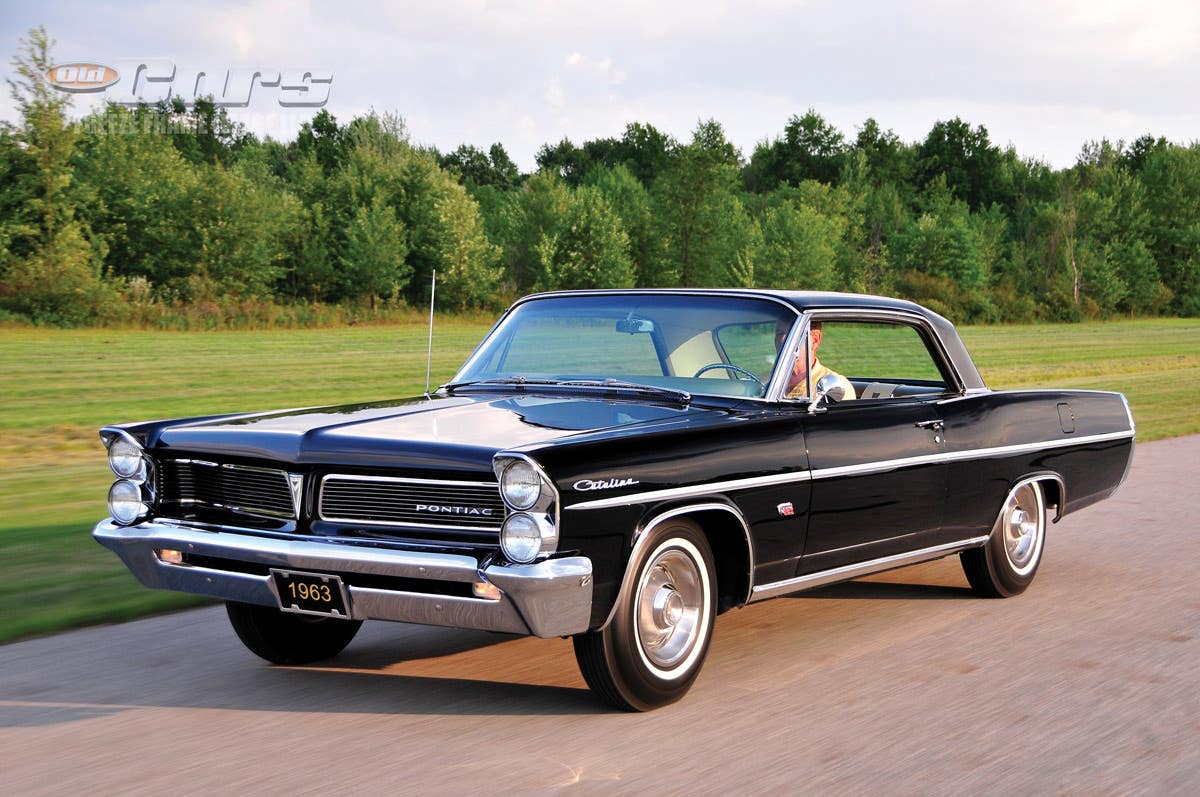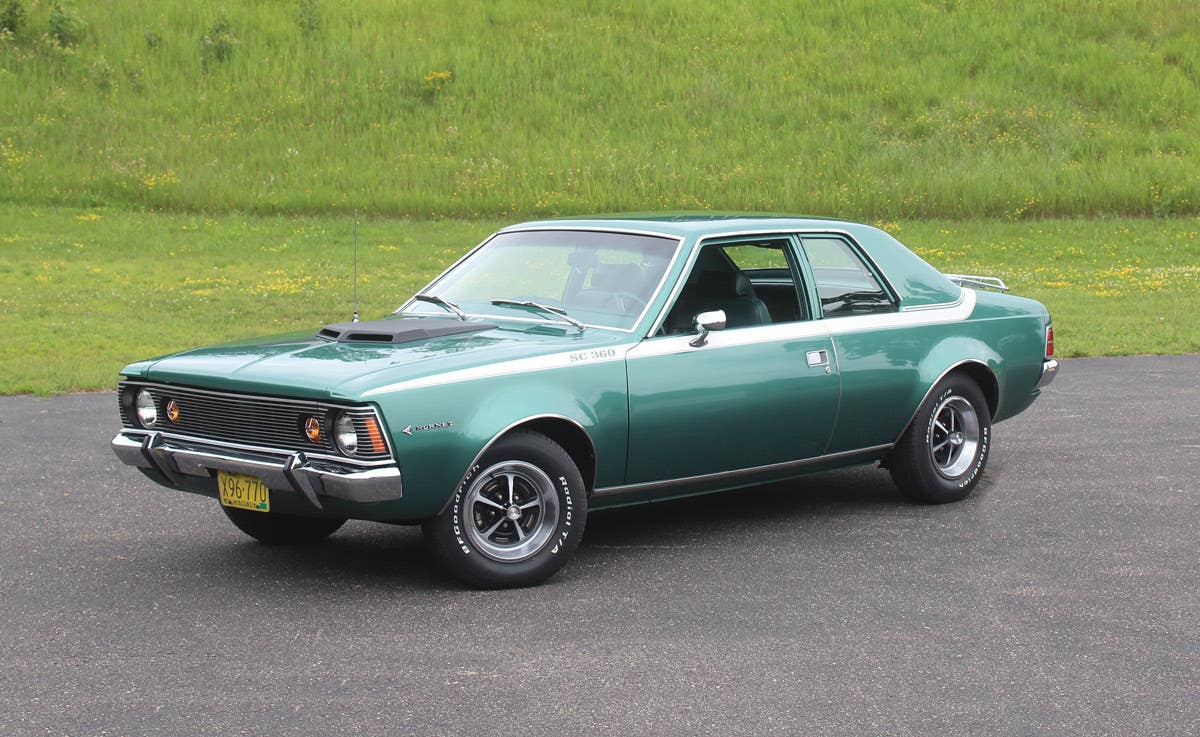Dan Gernatt’s award-winning 1913 Pierce-Arrow Model 66-A
7-passenger touring once served as firefighting vehicle. Now it is
a concours show vehicle.
In addition to providing an elegant and refined way to get from here to there, the Pierce-Arrow Motor Car Co. made very important contributions to the history of the industry.
Pierce-Arrow was the most successful early exponent of the six-cylinder car in America. The company pioneered power braking, and was associated with some remarkable early experiments in light alloy construction, streamlined bodywork and power steering. Pierce-Arrow installed the first hydraulic tappets.
Of course, on the aesthetic side, there was the famous Pierce-Arrow fender treatment, which was patented before the First World War. Designed by Herbert Douley, the distinctive headlamp-in-fender design would endure for the remainder of Pierce-Arrow’s existence.
And what about that hood ornament, arguably one of the most elegant hood ornaments on the road? Translated from the French, Tireur d’Arc means simply “drawer of the bow,” the poetic variation of archer. The first Pierce-Arrow archer was slender, partly clothed and helmeted, but he later took off all his clothes, grew more muscular and shucked the helmet. A fellow sweeping the floor of the Pierce-Arrow factory, incidentally, was the model, using his broom for the arrow when he posed. What a legacy!
For more than three decades the Pierce-Arrow Motor Car Co. of Buffalo, N.Y., was among the most respected and renowned automakers in America. Hard as it may seem to believe, the company responsible for producing the grandest of luxury cars began by building birdcages. From household products, the company turned to bicycles and then to automobiles shortly after the turn of the 20th century.
Winning several Glidden Tours in a row solidified the company’s reputation for engineering excellence. With its competitors going on a cylinder binge in the early ’30s, Pierce-Arrow jumped on the bandwagon in 1932 with a V-12 of its own largely under the guidance of Pierce-Arrow chief engineer Karl Wise. It was the first production engine equipped with hydraulic valve train lifters. Legendary race driver Ab Jenkins set a 24-hour world speed record at the Bonneville Salt Flats averaging more than 125 mph while driving a Model 53 Pierce-Arrow.
Perhaps the culmination of the company’s remarkable achievements could be summed up in one vehicle, the 1933 Silver Arrow 4-door sedan. Imagine going back in time to the New York Automobile Show in 1933 when this car debuted? It was without question one of the most talked about cars of the time; a dream car at $10,000 per copy, nonetheless with the idea that Pierce-Arrow would make the dream come true in a line of production automobiles.
Ironically, the Silver Arrow concept had originally been sketched by Phil Wright for a “car of the future” contest promoted by GM’s Harley Earl among stylists in the corporation’s Art & Colour Section. GM wasn’t interested in the idea, but Pierce-Arrow, where the young designer had friends, was. Five V-12 chassis were pulled from the Buffalo assembly line and shipped to South Bend, Ind., for the building of bodies. A three-month deadline was given, and behind closed doors work continued around the clock.
The deadline was made and the resulting car was breathtakingly sleek when streamlining was in its automotive infancy. Spare tires were concealed behind panels in the front fenders, door handles were recessed, and removable full skirts were added to the rear wheels all in the interest of aerodynamic efficiency. Just a slice of a rear window appeared from the sleek fastback roofline. Top speed was claimed to be 115 mph. Despite intense interest in the vehicle, turmoil would follow as Pierce-Arrow’s parent Studebaker would move into receivership and Pierce-Arrow would be sold. The Silver Arrow project was lost in the chaos with just the five cars having been produced and another great automobile was relegated to the history books.
It is thought by many that Pierce-Arrow built the greatest touring car of its time. Dan Gernatt of Collins, N.Y., owns a magnificent 1913 Model 66-A 7-passenger touring. The vehicle, which has a fascinating history, was exhibited at the 2009 Concours d’Elegance of the Eastern Unites States in Bethlehem, Pa. It served as the Concours 2001 Poster Car winning both the Chief Judges Award and a Bethlehem Star Award that year and was honored again with a Bethlehem Star Award at the 2009 20th anniversary celebration of the event. The car is thought to have originally been sold in Chicago, but before it was 10 years old, in 1922, the 7-passenger touring body was removed and the vehicle turned into a fire pumping engine by the Minneapolis Fire Department.
Between 1922 and 1924, 40 Pierce-Arrow vehicles were converted, transforming the fire department from a horse-drawn to a motorized fleet. In 1927, it was involved in a serious collision with another fire truck at a cross street and eventually put back into service with an incorrect radiator and substandard front fenders. It was then sold to another fire department in a small Minnesota town, where it served until the late-1950s. Still later, it was purchased by radio station KICD in Spencer, Iowa, to be used as a promotional vehicle.
KICD’s owners eventually donated it to the Sioux City Shriners. The Shriners sold it to Irving Jensen, also of Sioux City, on the condition that it would serve as the Shriner’s parade car for a period of 10 years. It was Jensen who restored the Pierce-Arrow back to its original touring car configuration.
The Gernatts purchased this magnificent vehicle in 1999. It is unique in that it is one of the last to be built with drum headlights — later cars received the distinctive headlamp-in-fender design that would endure for the remainder of Pierce-Arrow’s existence.
Similar to other great marques of the era, all was not well at Pierce-Arrow. The company fell victim to the stock market crash of 1929 and the ensuing tough economic times. Unlike Cadillac and Packard, who elected to add lower-priced models to their lines in order to combat the effects of the Great Depression, Pierce-Arrow refused to compromise on its luxury product. The company struggled for just a few more years before finally closing its doors in 1938.
In somewhat of an odd postscript and lasting legacy to the Pierce-Arrow story, Seagrave purchased the engine works of the company and used its V-12 engine design to power fire apparatus through the 1970s. That’s quite a tribute to both a remarkable motor and an equally remarkable motorcar.
MORE RESOURCES FOR CAR COLLECTORS FROM OLDCARSWEEKLY.COM



